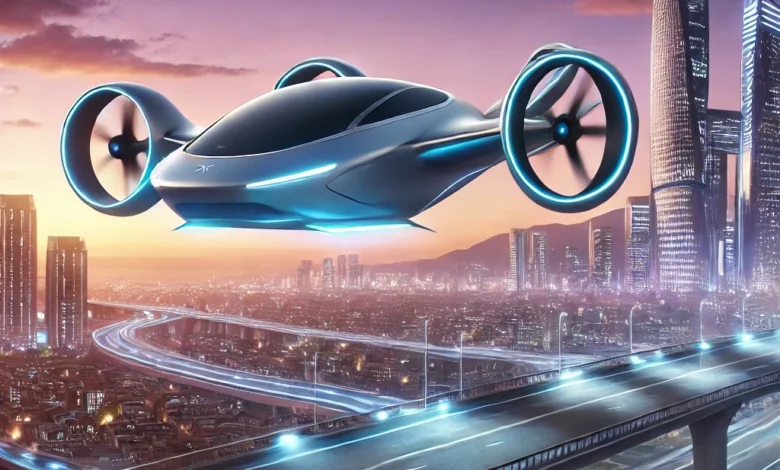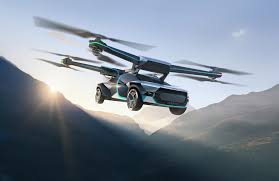The Future Takes Flight Exploring the Xpeng Flying Car

Introduction to Xpeng and the Vision of Flying Cars
Xpeng Motors, a trailblazer in the electric vehicle (EV) market, has taken a bold leap into the future of transportation with its innovative flying car concept. Founded to make intelligent mobility accessible to everyone, Xpeng has consistently pushed boundaries in automotive technology. The company’s ambition to revolutionize urban transport aligns with the growing demand for solutions to traffic congestion and environmental challenges.
Flying cars have long been a symbol of futuristic aspirations. From science fiction movies to ambitious prototypes, the idea of vehicles that can seamlessly transition between road and air travel has captivated imaginations. Xpeng’s foray into this domain isn’t just about creating a flying car; it’s about shaping a future where urban mobility is smarter, faster, and more sustainable.
As cities grow denser and traffic jams become a daily struggle, flying cars offer a promising alternative. Xpeng’s vision encapsulates the dream of an efficient, eco-friendly transport system that alleviates urban challenges. Their flying car project isn’t merely about innovation; it’s a step toward transforming how we perceive and interact with transportation.
Design and Features of the Xpeng Flying Car
Innovative Design
The Xpeng flying car is a marvel of engineering and design. Combining sleek aesthetics with robust aerodynamics, the vehicle seamlessly integrates a car’s functionality and an aircraft’s capabilities. Constructed from lightweight yet durable materials, it ensures safety and efficiency without compromising style. Its futuristic design is visually appealing and optimized for performance, enabling smooth transitions between ground and air modes.
Technological Features
Equipped with state-of-the-art technology, the Xpeng flying car is a dual-function marvel. It operates as a conventional road vehicle and transforms into an aircraft with vertical takeoff and landing (VTOL) capabilities. The car’s propulsion system, powered by advanced electric engines, ensures a quiet, eco-friendly flight. It also features autonomous driving and piloting options, making it user-friendly even for those without aviation expertise.
Safety Measures
Safety is paramount in Xpeng’s design philosophy. The flying car incorporates multiple redundancies to address potential risks. Emergency landing protocols, advanced collision avoidance systems, and compliance with stringent aviation and automotive regulations underline Xpeng’s commitment to passenger security. These measures ensure that users can travel with confidence, whether on the road or in the sky.
Technological Advancements Behind the Xpeng Flying Car

Flight Capabilities
The Xpeng flying car’s VTOL technology is a game-changer. It allows the vehicle to take off and land vertically, eliminating the need for runways. This capability is particularly advantageous for urban environments, where space is often limited. The flying car boasts an impressive range and speed, making it suitable for inter-city travel and short commutes.
Energy Efficiency
At the heart of Xpeng’s innovation is a focus on sustainability. The vehicle’s electric propulsion system significantly reduces carbon emissions compared to traditional modes of transportation. Advanced battery technology ensures extended flight durations while maintaining energy efficiency. This commitment to eco-friendly solutions aligns with global efforts to combat climate change.
Artificial Intelligence Integration
Artificial intelligence (AI) is pivotal in the Xpeng flying car. Its navigation system leverages AI to analyze real-time data on traffic and weather conditions, ensuring optimal routes and safety. Autonomous piloting capabilities, powered by machine learning algorithms, enable seamless operation with minimal user intervention. This blend of AI and cutting-edge hardware positions Xpeng’s flying car as a technological marvel.
Connectivity
The flying car integrates seamlessly with smart city ecosystems. Users can control and monitor the vehicle through mobile apps, accessing features like route planning and system diagnostics. This connectivity ensures a user-friendly experience, bridging the gap between traditional automotive functions and futuristic capabilities.
Potential Impact of Xpeng Flying Cars
Urban Mobility
Flying cars have the potential to redefine urban mobility. Xpeng’s flying car can reduce traffic congestion by shifting significant travel to the skies. This advancement shortens travel times and creates a more efficient transport system, particularly in densely populated areas.
Environmental Benefits
Xpeng’s flying car is designed with sustainability in mind. Leveraging electric propulsion minimizes greenhouse gas emissions, contributing to cleaner air and a healthier environment. The vehicle’s eco-friendly design supports global efforts to transition toward greener transportation solutions.
Economic Opportunities
The introduction of flying cars opens new avenues for economic growth. It fosters innovation in the aerospace and automotive industries, creating jobs in manufacturing, piloting, maintenance, and infrastructure development. As the market for flying cars expands, it promises to contribute significantly to economic growth.
Challenges
Despite its promise, the flying car faces hurdles. Regulatory frameworks need to evolve to accommodate this new mode of transportation, and air traffic management systems must be adapted to prevent collisions and ensure smooth operations. Public adoption is another challenge, as flying cars must prove their affordability and reliability to gain widespread acceptance.
Xpeng Flying Car vs. Competitors
Xpeng’s flying car stands out in a competitive market. While other players are developing similar concepts, Xpeng’s unique blend of design, technology, and affordability sets it apart. Competitors like Terrafugia and AeroMobil offer compelling alternatives, but Xpeng’s focus on electric propulsion and AI integration gives it a distinct edge. Moreover, its dual functionality and commitment to sustainability make it a strong contender in the race to revolutionize transportation.
Conclusion
Xpeng’s flying car represents a bold step toward a future where roads and traffic no longer constrain urban mobility. Its innovative design, advanced technology, and potential for environmental and economic benefits make it a transformative solution for modern transportation challenges. As the world moves closer to embracing flying cars, Xpeng’s vision promises to play a pivotal role in shaping the future of mobility.
FAQs
What is the price of the Xpeng Flying Car?
The price of the Xpeng flying car has yet to be officially announced, but it aims to be competitive with other flying car concepts.
How safe are flying cars compared to traditional vehicles?
Flying cars like Xpeng’s have advanced safety features, including collision avoidance systems and emergency landing protocols, making them comparable in safety to modern automobiles.
When will the Xpeng Flying Car be available to the public?
Xpeng has not provided a specific release date but is actively working toward bringing the flying car to market within the next few years.
Do you need a special license to operate a flying car?
A flying car will likely require a combination of driving and piloting licenses, subject to local aviation regulations.
What are the regulations for flying cars in urban areas?
Regulations are evolving to accommodate flying cars, focusing on air traffic management, safety, and noise control to ensure seamless integration into urban environments.





